On This Day…March 31st.
Today in 1945 the RAF sent a force of 469 aircraft from Bomber Groups 1, 6 and 8 comprising of 361 Lancasters, 100 Halifaxes and 8 Mosquitoes. The brief was to attack the Blohm and Voss shipyards at Hamburg where “a new type of U Boat was being built”.
Although this raid was unsuccessful due to cloud condition, a later raid on April 8th hit the shipyards with devastating effect.
The account below is a first hand account of their ‘ambush’ by JG 7 (Novotny Squadron) led by Franz Schall. The report is written by Herman Buschner, Ace and recipient of the Knight’s Cross.
“On 31 March there was something new for us — an early scramble. We were still at breakfast in the dining room and the weather was not very good with a cloud base 150-200 metres above the ground. We flew with seven 262s led by Oberleutnant Schall, one Schwarm and one Kette (pair)”
“Our mission was against US units in the Hannover region, with take off at 0900hrs. We climbed in tight formation into the clouds, heading westwards. The clouds just weren’t coming to an end and Schall asked the ground station guiding us whether we should make ‘Luzi-Anton 5’. A brusque answer came back over the radio: “First of all make Pauke-Pauke“ (Pauke-Pauke is a radio ‘attack signal’).
(Franz Schall’s ‘White 1’ Me 262)
“At 7,500 metres above ground, we had just come out of the clouds when Schall got the order: “Assume course 180, Dicke Autos, course 180!” (Dicke Autos is German for ‘fat cars’ - call sign for bombers).
“At the same moment someone from our unit cried, ‘To the right of us, nothing but bombers, to the right of us!’ Schall, as well as the rest of us, saw the bombers, flying north in a fomiation that was new to us. They flew staggered, about 1,000 metres deep and 2,000 metres wide. They were not US bombers, however, but Tommys in night-flight formation, doing a daytime attack on Hamburg.”
(Herman Buschner’s ‘White 7’)
“Schall ordered us to take up attack formation, already having long forgotten the order ‘assume 180’. We were lucky to reach the band without fighter protection and Schall, a fighter with real heart, was not going to pass up a chance like this. As we got closer we could clearly see what kind of bombers they were — RAF Lancasters — on their way to attack Hamburg, but still 50km away over the Luneberg Heath.”
“On our first attack seven Lancasters were shot down with the R4M rockets. Now the large unit dissolved somewhat and the Rotten flew a renewed attack on the bombers. I made a right turn and lined up for another attack, using the nose cannon.”
“My Lancaster lay directly in my sights and I only had to get a bit closer. I opened fire, the hits were good, but the pilot of the Lancaster must have been an old hand. He turned his Lancaster steeply over on its right wing, making a tight turn around the main axis. With my speed I was unable to follow this tight manoeuvre and was also unable to see if my shots had had any effect, or to see how he flew on.”
“I shot through the pile and had to think about returning home. The other pilots were also having the same problem. We had a shortage of fuel and had to get back to our own garden. At the same time, all called to the ground control ‘Autobahn’, for the course number for the direction back to our home airfield.”
Only one of us could be handled by ‘Tornado’ ground control, but all of us wanted to be given a course. We were still all in the tangle of RAF bombers, but none of us had visual contact with each other. We all had to go back down through the cloud layer. I thought to myself, ‘Go back down alone!’
“At 7,000 metres I dived into the cloud layer, laying on a course of 090, 700kmph and the engines running at 6,000rpm. Over the radio I could still hear my colleagues calling ‘Autobahn’ to ‘Tornado’ — they were all still in the air. My altimeter showed that I was quickly losing height, and at 1,000 metres it was already dark — I had to get out of the clouds soon. My altitude was diminishing, the gauge showing 500, 400, 300 metres — the ground must surely soon appear. Yes, there it was. Doing 700kmph I shot out of the clouds and found myself over fields and clumps of trees. Unfortunately I didn’t know quite where I was.”
(Buschner’s Bf109, 1842)
“On my left side I could make out the sea — was it the Baltic, or where was I?
Anyhow, I flew eastwards with a normal turbine rpm and at 800kmph. In the distance I could see the silhouette of a town. I quickly thought about it, then I was sure that the town had to be Lubeck. I had recently seen a film called Die Budenbrocks in which the silhouette of the town had been shown. Flying over the harbour, I came under fire from light flak, but I was too fast — they had no chance of hitting me.”
“Now I knew how I could get back. My other comrades were also on their journey back to Parchim, and now the traffic with ‘Tornado’ was quieter, so I could also call up and ask for instructions, giving him my location. I was the last 262 to call in after the mission at 7,000 metres. Now he had his flock together.”
(Buschner’s FW190, 1844)
“By the time I reached Ludwigslust I had already been given permission to land, as well as the comforting news that there were ‘no Indians on the airfield’. After 65 minutes flying I landed without difficulty in Parchim, the last of the seven.”
“My list of aircraft shot down was extended: one Lancaster confirmed and one definitely damaged. Altogether we had certainly shot down ten Lancasters and five others had been damaged.“ The seven 262s on the mission had landed without problems after 60-70 minutes flying time in bad weather conditions. The reported aerial victories were confirmed by Jagd Division, and the bombers had offloaded their cargoes over the heath, far from their target. Around sixty flying personnel were taken prisoner on the heath.”
- RAF records show that of the 469 aircraft involved in the attack on Hamburg, eight Lancasters and three Halifaxs were lost.
Preparing equipment for the continuing Rhine Crossing On last day of March, 1945.
F6F-3 Hellcat (no. 33) of VF-5 on its nose after hitting the barrier on board USS Yorktown (CV-10) on March 31st, 1944.
Winston Churchill personally inspects a Cromwell Mk IV tank of the 2nd Armoured Battalion On March 31st, 1944, Yorkshire, England.
Short Sunderland Mark I (L2163 DA-G) of No. 210 Squadron RAF based at Oban, Scotland, in flight over the Atlantic while escorting Canadian Troop Convoy 6 inbound for Greenock. This was the first flight of the newly established ‘Anti-U Boat’ patrol on March 31st, 1943.
The Bomb bay of an Avro Lancaster of No. 57 Squadron RAF at Scampton, England, being loaded with a 4,000 impact-fused HC ‘cookie’ bomb. March 31st, 1941 saw the first RAF use of this type of bomb on a raid on Emden, Germany.
A beautiful photograph of Douglas Devastators taken on board the USS Enterprise (CV6) in early 1941, but which appeared in March 31st edition of Life magazine, 1941.
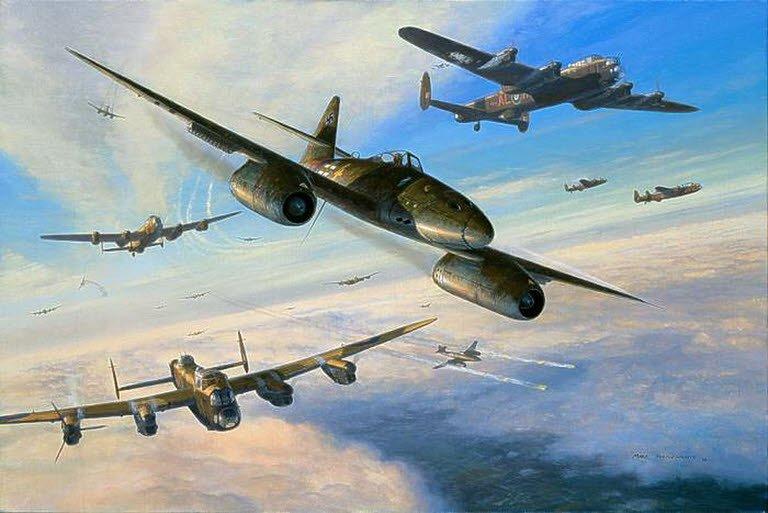
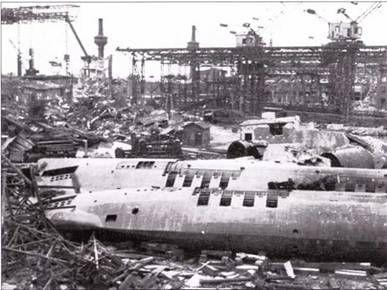
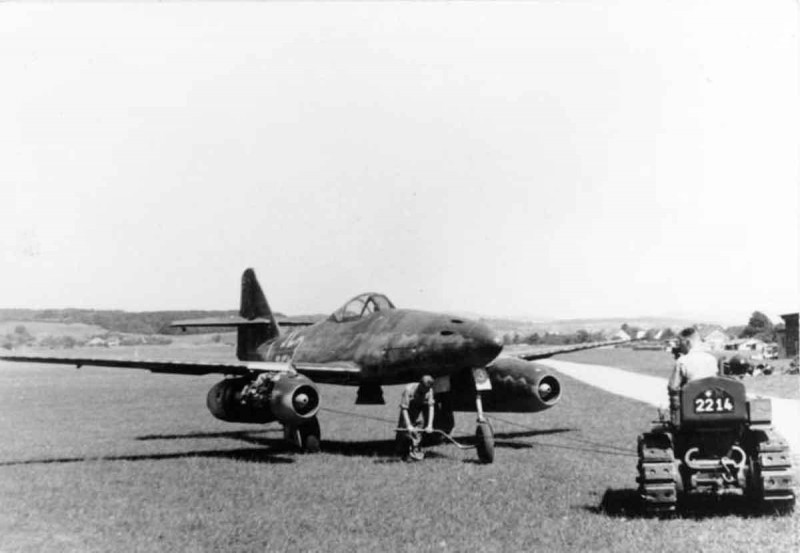


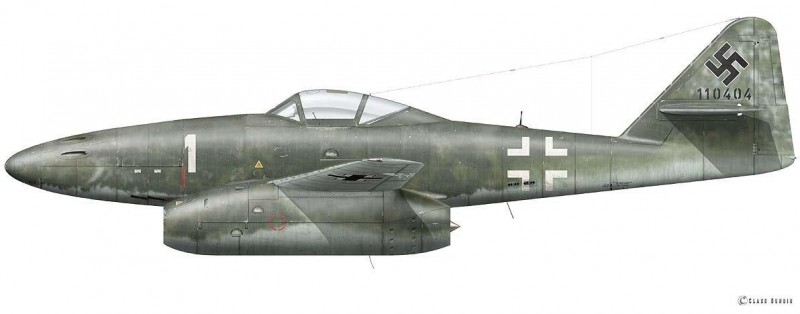






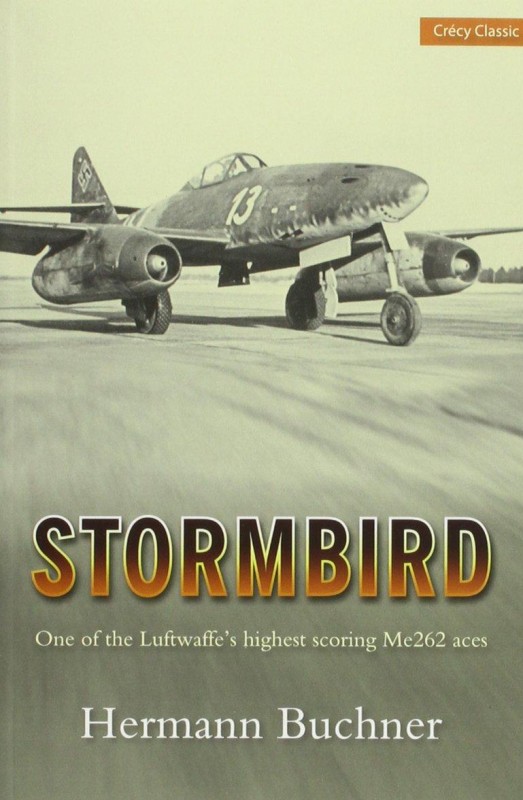
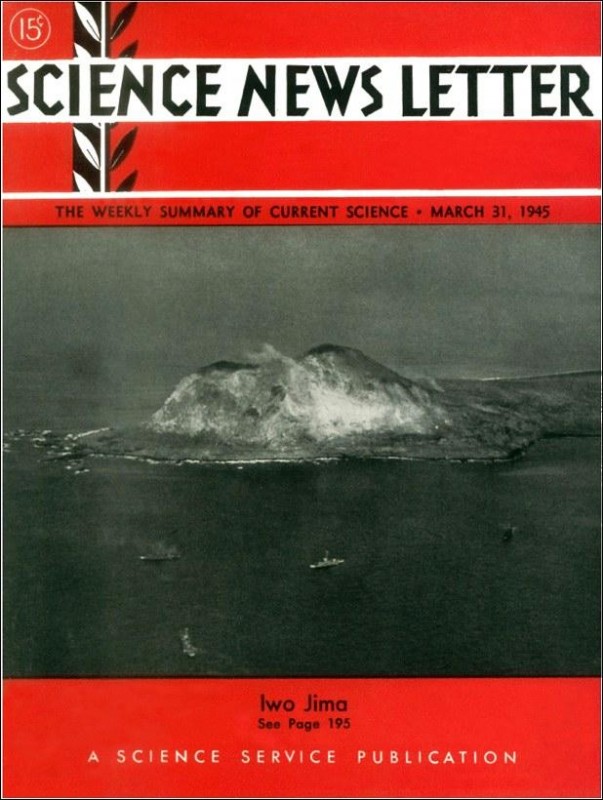
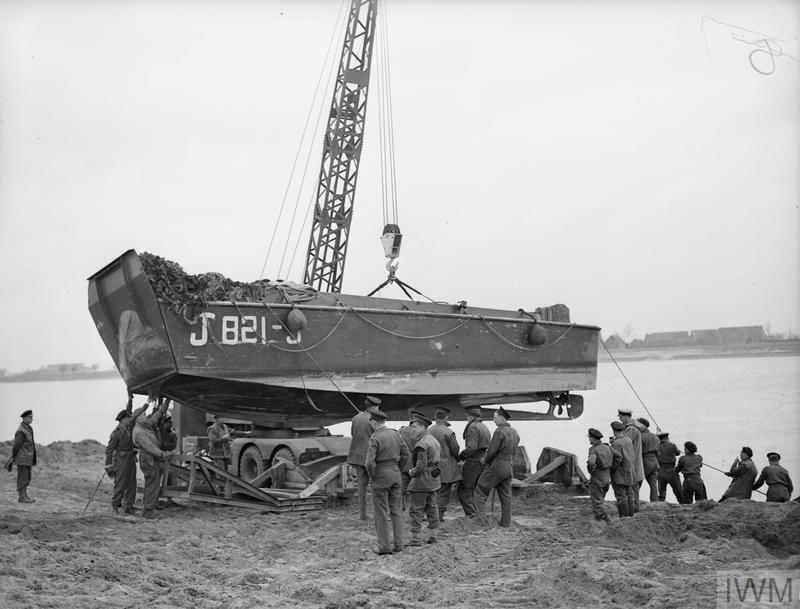

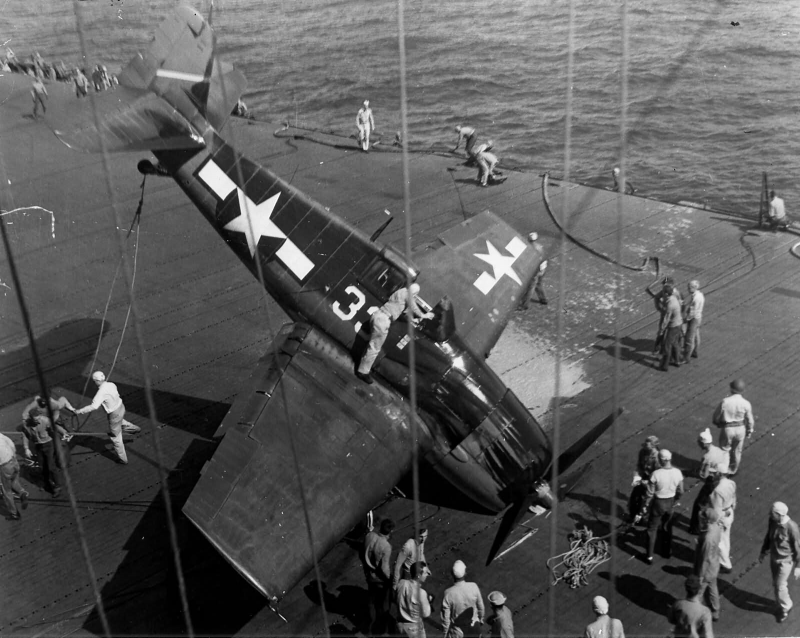

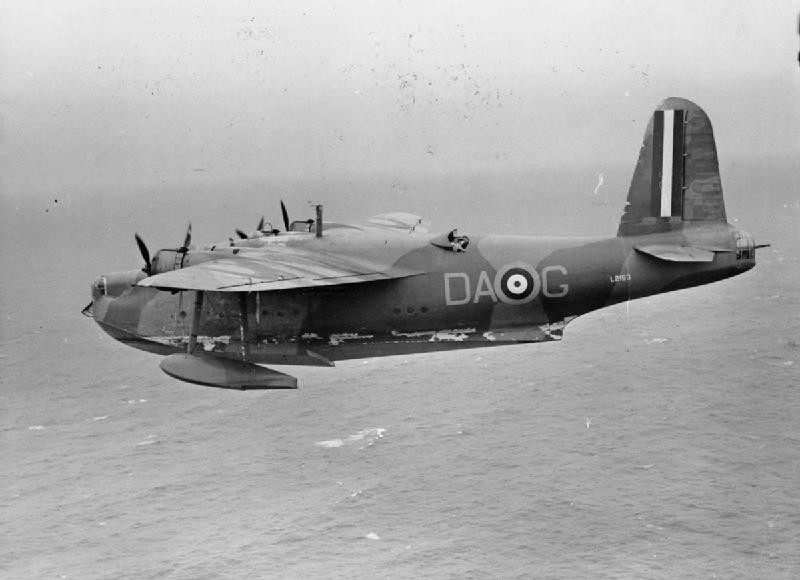
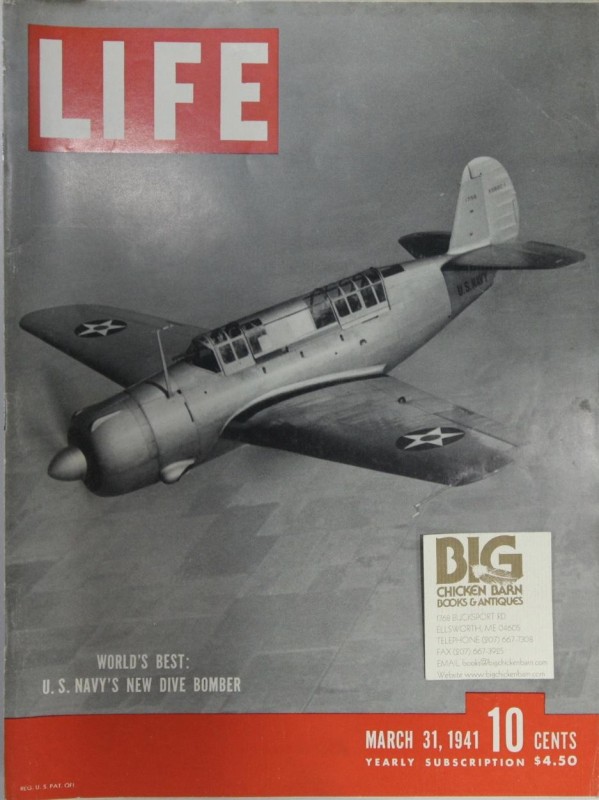

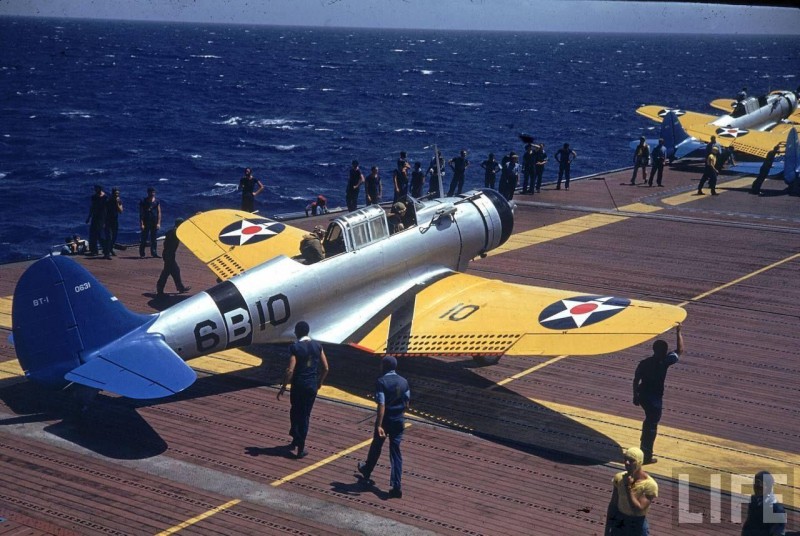
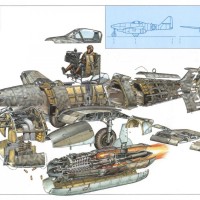
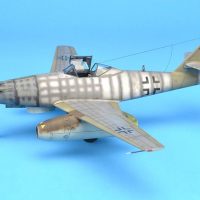
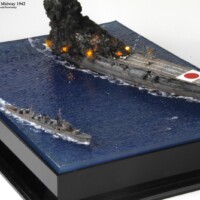
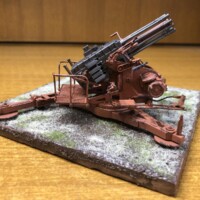
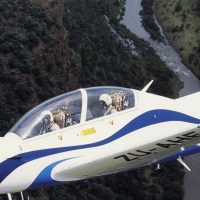
David, A lot of great pics to digest today. Love the 262 cutaway. The landing craft being transported would be a nice alternative display, to model, versus a water scene. As always, good job and thanks.
Thanks for the comments, Gary. Much appreciated and hope the weekend is going well.
Another great installment...these are so much better than reading the news. Parchim is an International Airport serving the cargo industry. It still looks pretty rural. Fascinating to see where this all took place.
You'd never know there was an airfield at Ludwigslut. After the war the Russians were given control of the airfield and went in to disuse. After it was turned back over to the Germans the new owner tore down the hangars and the property is being converted to industrial use. ...from the forgotten airfields website and google earth.
2 attached images. Click to enlarge.
Thanks for the photos, Jim. Always fcinating to see these then/now comparisons.
Great pics, David. Interesting story about the 262 attack. The color dive bomber photos are actually Northrop BT-1s, this was the forerunner of the Dauntless.
Ah. My bad about the ‘Devastators’, John. Thanks for the steer, much appreciated.
I’d love to see a modern kit of the BT-1 in 1/48.
Fascinating David. Great job as usual.
Um, actually, those pictures are of Northrop BT-1 dive bombers, the immediate ancestor of the SBD Dauntless (look at the wing), not TBD Devastators.
That photo of the XSB2C-1 as 'world's best" divebomber brings a smile. The prototype would crash about a week after that photo was taken, setting the program back a year. Due to the Navy's demand that the aircraft be capable of being put two on an elevator for the new Essex class, the airplane was designed "too short" aerodynamically. It never lived up to its original specification requirements, it was probably among the worst dive bombers of WW2, and by the time they "got it semi-right" with the late-production SB2C-3 and the SB2C-4 the Navy was getting rid of it on aircraft carriers, since the Hellcat and Corsair were better dive bombers and also excellent fighters. The story of the Helldiver, which the Navy wanted to cancel three times (but were prevented in doing because Charles Wilson, head of United Aircraft, the holding company that included Curtiss-Wright, was the Chairman of the War Production Board that determined what stayed in production) is the beginning of the B.S. associated with too many products of the military-industrial-congressional-complex. In the end, over half of those produced were flown from the factory to the storage facility where they would sit until sold for scrap after the war. Senator Truman's investigating committee's pursuit of Curtiss-Wright for their crimes (really! Fraud, lying to Congress, and several others) was what led to the company's final demise in 1949. As John Bridgers, Engineering Officer of VB-15 and in charge of ensuring that the 800 post-production modifications required to make their SB2C-1Cs work had been accurately done, wrote in his memoirs, "I was to learn that the Helldiver had three fewer engines and 12 more hydraulic units than a B-17." The SB2C-1C was so underpowered that on takeoff from a carrier, the plane would drop out of sight toward the water as the pilot attempted to build up enough speed to be able to turn away from the carrier without stalling and crashing right in front of the coming ship. As VF-15 pilot Jim Duffy told me, "I wouldn't have flown one of those things with a direct order and the Master At Arms holding a pistol on me."
You know, I had a feeling that the Curtiss would bring you in, Tom. Knowing something of its chequered history, the claim to the ‘world’s best’ sobriquet is, at best, laughable - at worst, well, dangerous. Thanks for the history - as usual.
John Healy beat you to the Dauntless issue. Doubtless I need to brush up on my Janes’.